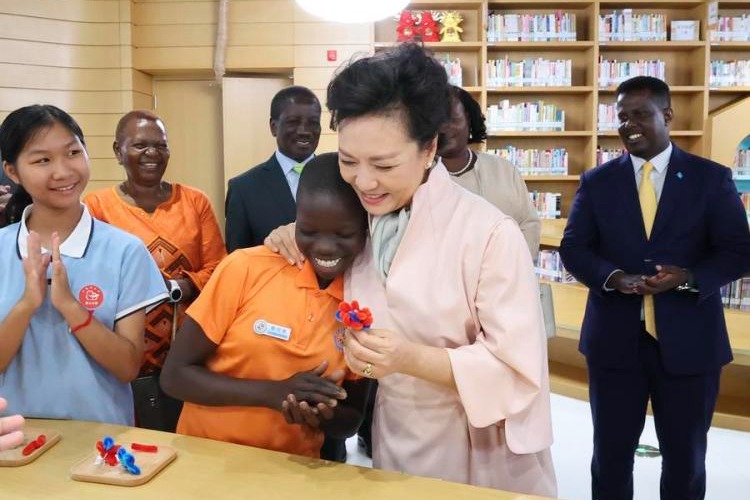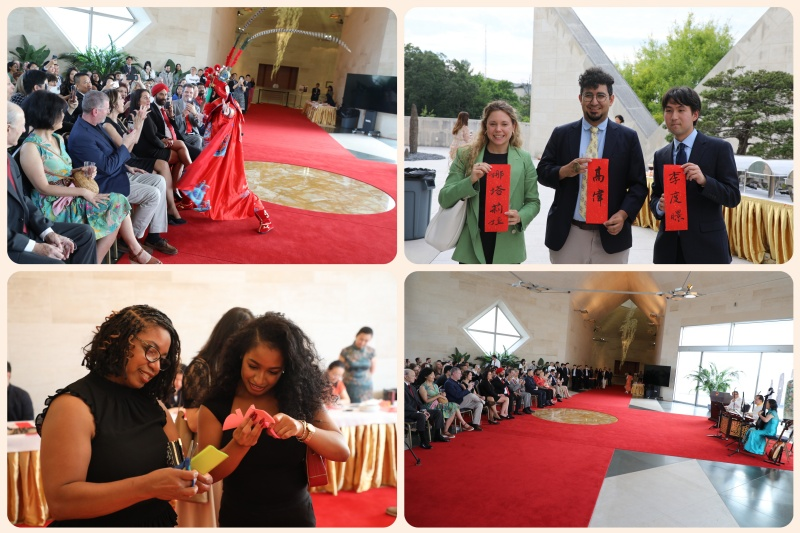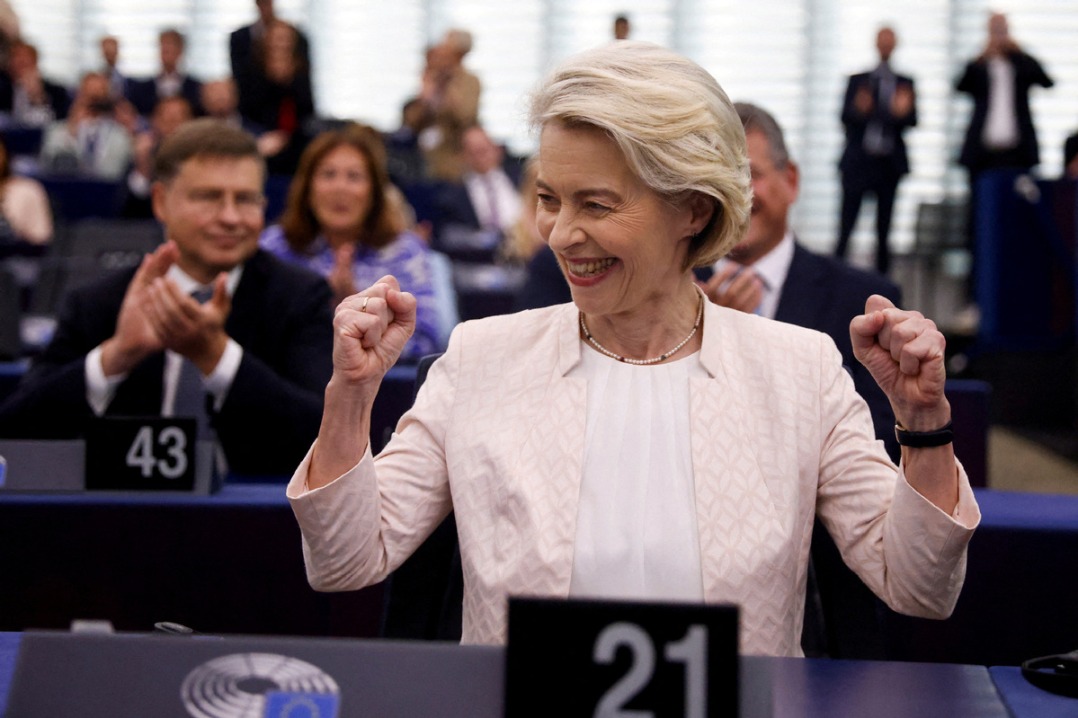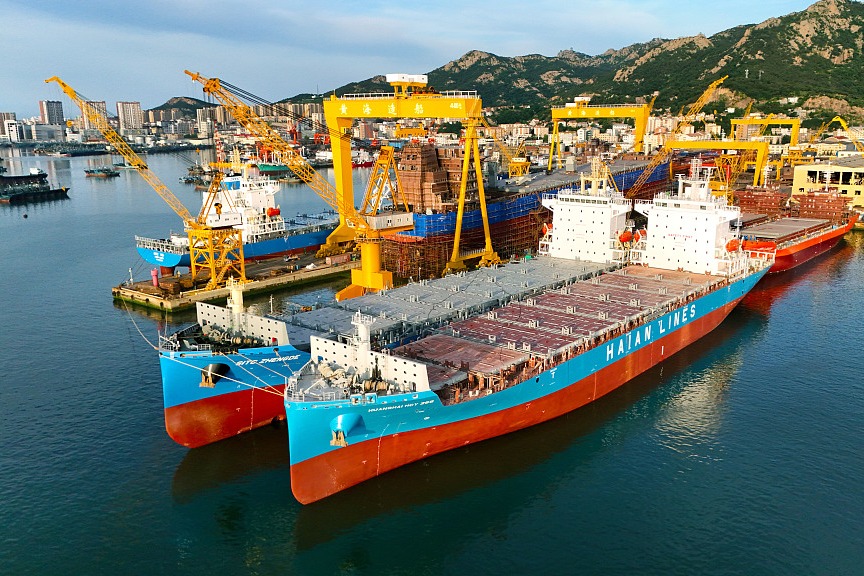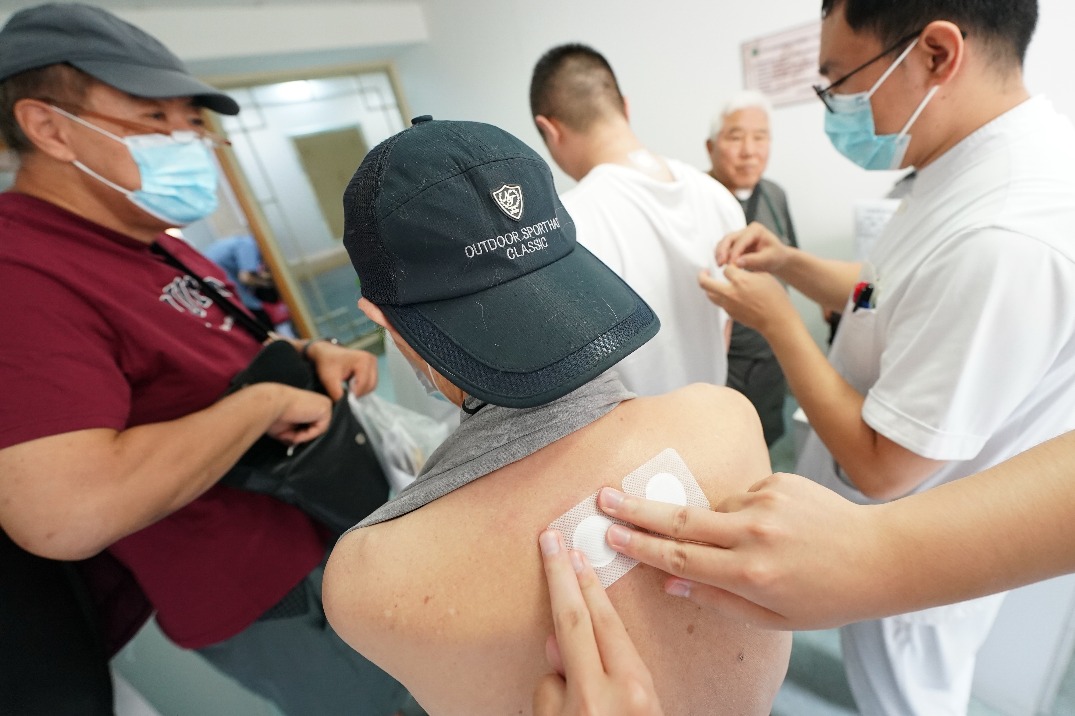Plenum marks milestone in further reform
China Daily | Updated: 2024-07-20 09:38

Editor's note: The third plenary session of the 20th Central Committee of the Communist Party of China, held from Monday to Thursday, will profoundly advance reform and opening-up. Six experts share their views on the issue with China Daily:
Plenum charts course for future growth
The just-concluded third plenum of the 20th CPC Central Committee can be compared with the third plenum of the 11th CPC Central Committee in 1978 which launched reform and opening-up and unleashed China's unprecedented economic rise.
It can also be compared with the third plenum of the 18th CPC Central Committee in 2013 that emphasized the importance of narrowing the wealth gap, the need for more balanced region al development, along with improving the social welfare system and boosting the role of the private sector alongside that of State-owned enterprises.
By adopting the "Resolution of the Central Committee of the Communist Party of China on Further Deepening Reform Comprehensively to Advance Chinese Modernization", the third plenum of the 20th CPC Central Committee has set the stage for promoting a "new type of industrialization" to enable China's industries to rise up the value chain, and further improve China's competitiveness by promoting advanced manufacturing and digitalization, and securing the supply chains while further developing core and emerging technologies.
The plenum vowed to promote, among other things, homegrown, high-end, intelligent and green manufacturing, while supporting strategic and emerging industries such as semiconductors to make key industrial and supply chains more secure in the face of increasing external pressure, especially from the United States and its allies.
It also vowed to further reform specific industrial sectors including high-tech and property, without draconian policy shifts, promote initiatives to overcome the economic and social challenges, and enhance self-sufficiency in technology, while avoiding fundamental changes.
In other words, the third plenum has charted the course of the Chinese economy's future development in the face of an increasingly complicated global outlook and challenges.
The International Monetary Fund on Tuesday revised China's 2024 economic growth forecast to 5 percent in an update to its World Economic Outlook from 4.6 percent in April, while lowering the US' growth forecast. As such, the compass of the third plenum points to a growing economy serving the Chinese people as well as the people in other countries.
Harvey Dzodin is a senior fellow at the Center for China and Globalization.
Reform, opening-up to reach new heights
We live in a world of interdependence where the destinies of nations are intertwined. The future of China is linked to that of the world, and vice versa. In this context, it is not surprising that the just-concluded third plenary session of the 20th Central Committee of the Communist Party of China in Beijing was closely watched.
First, the meeting reaffirmed that China remains committed to deepening reform and opening-up initiated 46 years ago. It also focused on the promotion of Chinese modernization, the fundamental idea that China is inventing its own modernity.
Despite the evolution of the world, including changes in certain Western countries' policies toward China, Beijing welcomes foreign participation in its transformation while viewing the world as a horizon for its enterprises, culture and citizens. In other words, China is neither looking for decoupling nor de-globalization. It looks with confidence at a world of interdependence and has called for building a community with a shared future.
Second, China continues the transition of its economy from quantitative growth to high-quality development. Breakthroughs in promoting high-quality economic development were important objectives stated in the report to the 20th National Congress of the CPC in October 2022. This means economic activities must aim for sustainability and innovation. Such a transition takes time, induces changes in practices and mindset, but is necessary to maintain environmental balance and create long-term economic value.
Observers will interpret the conclusions of the third plenum differently. I look at it as a response to those who talk about the idea of "Peak China". The narrative that presents the Chinese economy as having already peaked with per capita GDP just above $13,000 is simply misleading. If US strategists were genuinely convinced of the "Peak China" theory, they would be far less preoccupied with China's increasing power.
To conceptualize the dynamics at play in the world's second-largest economy, "transition China" is a more accurate, intellectual framework than "Peak China". A corollary of the shift from quantitative to qualitative growth is that Chinese enterprises will become increasingly competitive and innovative. Consequently, they will alter the nature of competition with their foreign peers.
During his inspection tour of Heilongjiang province in September 2023, President Xi Jinping proposed the concept of new quality productive forces as a crucial component of comprehensive high-quality development. This initiative is expected to directly influence the productivity of Chinese enterprises and consequently enhance their competitiveness.
China, which has reshaped globalization by unprecedentedly reinventing itself, will continue to defy expectations. It will persist in amassing both hard and soft power, leveraging these resources not only for the benefit of its people and strategic independence, but also for enhancing the effectiveness of global governance.
As we face a high level of uncertainty in many regions of the world, the stability and predictability emerging from the political mechanisms in China is good news. The new consensus reached by the third plenum represents a middle path that seeks to avoid the two extremes: an innovative society cannot emerge in a context of absolute planning and control, yet building upon uncertain pillars is equally impractical.
The renaissance of an ancient civilization such as China's, as well as the modernization of a society as large and diverse as China's, cannot be easy processes. However, anyone reflecting on them without prejudice and making the effort to resist simplification would recognize how they enrich our world both materially and intellectually.
David Gosset is the founder of the China-Europe-America Global Initiative.
Tech innovation key to modernization
In the just-concluded landmark meeting, China reaffirmed that opening-up is a defining feature of Chinese modernization and explained why sticking to the basic State policy of opening-up and continuing to deepen reform is necessary. The communique issued by the third plenum of the 20th CPC Central Committee makes it clear that China will remain committed to expanding opening-up, telling the world that China's door will continue to open wider.
One of the most critical areas of international cooperation is in science and technology. As a key variable influencing technological advancement and people's ability to tackle global challenges, technological innovation must be leveraged for the greater good. China's experience in maintaining an open, mutually beneficial strategy in technology has proved invaluable. The 20th National Congress of the CPC in 2022 also underscored the importance of expanding global scientific exchanges, strengthening the international research environment and creating a globally competitive innovation ecosystem.
Also, there is a need to establish a systemic framework that promotes comprehensive innovation. At the heart of this framework should be technological innovation. Developing institutions and environments that facilitate international scientific exchanges, foster a more internationalized research setting, and promote China's integration with the global innovation network is an essential component of a supportive innovation ecosystem. This will not only enhance China's influence in global scientific governance, but also contribute to the overall innovation landscape.
However, we must also recognize that the world is undergoing unprecedented changes, and global scientific cooperation faces many challenges. It is important that we remain steadfast in our commitment to opening-up and mutual benefit in today's complex global environment.
By adopting a rules-based approach to global scientific cooperation, China aims to address uncertainties and work with other countries to build an open, fair and non-discriminatory global scientific development environment.
Liu Dongmei is secretary of the Party Committee of the Chinese Academy of Science and Technology for Development.
CPC leadership strikes right balance
The third plenary session of the 20th Central Committee of the Communist Party of China serves as a prime example of how China's reform and opening-up policy has evolved since the third plenary session of the 11th CPC Central Committee in 1978. The communique released after the conclusion of the plenum on Thursday shows how the Party leadership strikes the right balance, dialectically, between internal and external factors.
While dealing with the variables as China's economy and the world economy evolve, the Party remains committed to pursuing Chinese modernization. To steer such a large economy and a country with such a large population in uncertain times is indeed a mind-boggling task.
The third plenum shows the Party remains committed to preserving a socialist market economy and improving Chinese people's living standards, while giving more opportunities to the private sector to shine, and vitalizing rural areas to bridge the urban-rural income gap.
The Party, according to the document, will continue pursuing modernization and industrialization with emphasis on scientific and technological progress, promoting innovation in all areas of the economy and better protecting the environment.
The third plenum also vowed to balance material improvement and spiritual civilization, and enhance "the excellent traditional Chinese culture" while using the rapid development of information and communications technology to cultivate cultural talents.
The Party will also strengthen the military while remaining committed to the peaceful rise of China with a foreign policy based on win-win cooperation through such mechanisms as the Belt and Road Initiative, and further open up the economy to the outside world.
Most importantly, the third plenum emphasized that the Party will implement measures to overcome challenges. In the past, China has taken decisive actions during pandemics and trade wars, enabling the nation to leverage opportunities amid risks and challenges.
This strategic approach positions China to maintain sustainable growth and advance toward achieving socialist modernization by 2035.
This delicate balance between short-term and long-term goals is the unique and admirable feature of China's policymaking today.
Hussein Askary is vice-president of the Belt and Road Institute in Sweden and a research fellow at Guangdong Institute of International Strategies.
Fiscal, tax reforms in focus
The third plenary session of the 20th Central Committee of the Communist Party of China emphasized coordinated reforms in the fiscal, tax, financial, and other major sectors and work to enhance the consistency of macro policy orientation.
Finance serves as a foundation and crucial pillar of national governance. A scientific fiscal system is essential for optimizing resource allocation, maintaining market unity, promoting social equity, and ensuring long-term peace and order in the country.
From this fundamental perspective, deepening fiscal and tax system reform is a foundational project essential for deepening reform, necessitating a focus on systemic integration.
To deepen fiscal and tax reforms, it is necessary that the reform agenda aligns with the general objectives of reform in all fields: specifically, to continue improving and developing socialism with Chinese characteristics and to modernize the national governance system and governance capacity.
Besides, fiscal and tax reforms should be implemented with the aim of promoting high-quality development and building a modern socialist country. This can be done by creating conditions conducive to reforms in education, science and technology, talent cultivation and other fields.
Another major task is building a high-level socialist market economy. This involves deepening fiscal and tax reforms in order to improve the foundational institutions of a market economy, thereby enhancing the fiscal system's role in building a unified national market, ensuring equal participation of all forms of businesses in market competition, and motivating local governments to develop the local economies.
Improving people's livelihoods, too, is a major goal of Chinese modernization. Hence, fiscal and tax system reforms should adhere to the principle of doing what is possible depending on the resources available and improving the basic public service systems. And adjustments in the fiscal revenue and expenditure systems should be closely linked with improving the income distribution system and employment-first policies, strengthening the social security system and deepening healthcare reforms.
Bai Jingming is a former deputy head of the Chinese Academy of Fiscal Sciences.
China adapting to demographic shifts
The communique issued by the third plenary session of the 20th Communist Party of China Central Committee has sent a crucial message: Chinese modernization isn't just about economic growth, but also about adapting to the profound demographic shifts.
The third plenum's call to "improve the systems for facilitating population development and providing related services" is a fundamental policy to ensure the wellbeing of the people of a nation in transition.
China has reached a demographic crossroad. It has transitioned from a period of high birth rates to a very low fertility rate and rising life expectancy. That life expectancy in China has increased to more than 78 years is a testament to China's advancements in healthcare and people's living standards. What is concerning, though, is the dramatic decline in the total fertility rate, from more than 6 in the mid-20th century to 1.3 in 2020.
To address these challenges, China needs to adopt a three-pronged strategy.
To begin with, the government needs to provide early childhood support for new parents. The goal of 4.5 childcare spots per 1,000 people, as specified in the 14th Five-Year Plan (2021-25), is not just a statistic, but a necessary step toward creating an environment where families can grow with confidence.
Also, more policies should be drafted to reduce the costs of childbirth, child-raising and education.
And providing effective eldercare services is very important. With China's population aging rapidly, it is imperative that the government builds a robust support system for elderly people, including improving the pension system, basic pension services and health and long-term care for the elderly.
China's approach to dealing with the demographic challenges is not merely about managing numbers, but about building a future in which life is supported at every stage. By focusing on early childhood, fertility and eldercare, the government can better cope with the demographic shifts.
Yuan Xin is a professor at Nankai University's School of Economics and vice-president of the China Population Association.
The views don't necessarily reflect those of China Daily.





